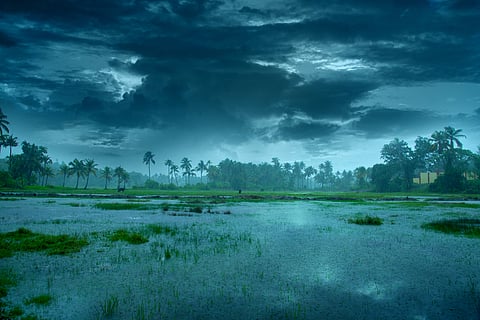
- Destinations
- Experiences
- Stay
- What's new
- Editor’s Picks
- Responsible Tourism
- CampaignsCampaigns
- Subscribe

The monsoon season in India is well-known for its breathtaking beauty. Over the years, poets, writers, photographers, and artists have beautifully described the allure of monsoon clouds, the vibrant sky, the scents, the unique light, and the richness of the landscapes in India during the rainy season. While monsoon destinations in India are stunning, it's important to keep in mind certain considerations, such as heavy rainfall, landslides, and transportation disruptions to make the most of their experience, when exploring India during the monsoon. Here's a helpful guide with essential tips for navigating the country during the rainy season.
The monsoon season in India lasts from June to September. The rain starts in the southern tip in late May or early June and gradually moves across the country. The monsoon rains usually subside around the beginning of October. It's important to note that the monsoon rains in India are very heavy, and not all places are ideal for exploration during this season. Some areas are best avoided due to associated risks, such as the high Himalayan mountains, which are susceptible to landslides during monsoons. Regions like Uttarakhand, Himachal Pradesh, and the North East should be avoided to prevent encountering natural disasters. Most forest reserves close during this season, limiting wildlife travel, although some keep their buffer zones open. Many places in India thrive during the monsoon, such as Goa, Kerala, Rajasthan, some places in Maharashtra like Lonavala and Malshej Ghat, the ancient town of Mandu in Madhya Pradesh with palaces built to enjoy the monsoon, and more. Additionally, areas like Ladakh and Spiti Valley are known as "rain shadow" areas and are ideal for rain-free trips. However, it's essential to conduct thorough research before booking to check for potential flooding on the roads leading to these places.

We highly recommend that you get your hands on Chasing The Monsoon by Alexander Frater. This book follows the author's journey through India's summer monsoon, painting a vivid picture of the beautiful skies and clouds. Frater's rich storytelling takes readers on an unforgettable adventure through Cochin, Goa, Bombay, Calcutta, and Cherrapunji in the 90s.
To stay prepared during the rainy season, it's important to pack the right clothing and rain gear. You should definitely have a waterproof bag to protect your travel essentials. Using a rain cover for your backpack is also a good idea. Do carry a heavy-duty windcheater or raincoat, and an umbrella. These items are all crucial for travelling during the monsoon season. Since monsoons can make roads and paths slippery, it's important to wear waterproof footwear with a strong grip. For more tips on what to pack, check here.
Make it a priority to check the weather before venturing out anywhere. While some sites may offer forecasts weeks in advance, it's crucial to remember that weather can be highly unpredictable. To ensure you are well-prepared, monitoring predictions for your destination at least a week before your trip and using reputable sources such as Weather.com, the India Meteorological Department, and reliable local news websites are important. This will enable you to plan effectively and make any necessary adjustments to your schedule.

When packing, be sure to bring along necessary medicines and related products to address potential health issues during the rainy season. Your checklist should include medications for stomach bugs, mosquito and insect repellents, as well as medicine for flu, fever, cold, and headaches. Also, remember to pack water purifying tablets or a bottle with a built-in water purifier.
During the monsoon season, it's important to be extra cautious about your food choices, especially if you want to try the local cuisine while traveling. Here are some things to keep in mind:
Seafood should be avoided because the rainy season is the breeding season, leading to a scarcity of fresh seafood and an increased risk of consuming stale and contaminated food.
Avoid fruits and vegetables that are exposed to the environment, as there is a high chance of contamination from flies and pests.
Similarly, avoid leafy green vegetables due to the increased risk of germs and contamination.
It's best to avoid street food and opt for meals at clean and hygienic restaurants.

